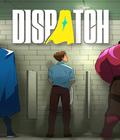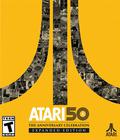
Genre: Action/Strategy
Publisher: Koei
Developer: Koei
Release Date: February 22, 2005
Buy 'KESSEN III': PlayStation 2
 Kessen III is Koei's latest entry in their well-known action/strategy series. If you recall, the original Kessen was a launch title for the PS2, and it impressed gamers with a graphics engine that allowed dozens of soldiers to be displayed on screen at once. Kessen III is marketed as an action/strategy game, but strategy fans hoping for a deep strategic experience will be disappointed with the game's emphasis on hacking 'n' slashing and head-on warfare. On the other hand, fans of Koei's own Dynasty Warriors series who've wanted a pinch of unit management with their hack-'n'-slasher will probably enjoy what Kessen III has to offer.
Kessen III is Koei's latest entry in their well-known action/strategy series. If you recall, the original Kessen was a launch title for the PS2, and it impressed gamers with a graphics engine that allowed dozens of soldiers to be displayed on screen at once. Kessen III is marketed as an action/strategy game, but strategy fans hoping for a deep strategic experience will be disappointed with the game's emphasis on hacking 'n' slashing and head-on warfare. On the other hand, fans of Koei's own Dynasty Warriors series who've wanted a pinch of unit management with their hack-'n'-slasher will probably enjoy what Kessen III has to offer.
Kessen III's storyline revolves around Japanese Samurai Nobunaga Oda and his rise to power in the 16th century. Despite the horrendous voice acting and spastic body language of the characters, the story is interesting to follow. It's hard to tell if Oda is a villain or a hero, as he spreads his own idea of freedom by pillaging the lands of anyone who opposes him. Voiceovers and nice-looking cut scenes effectively move the story along as you win major battles.
If you've had the chance to play Phantagram's Kingdom Under Fire: The Crusaders for Xbox, you have a basic idea of what Kessen III is all about. Before a battle takes place, you navigate a simplistic world map. This interface allows you to access battles, a store where you can purchase and sell equipment, and a home base where you manage equipment and skills.
There are often multiple available battles to choose from, in three different categories: minor, major, and decisive. Minor battles serve to simply aid you in acquiring new attributes for your characters, such as experience points, troops types, and gold. These smaller battles also allow more powerful characters to recuperate so they're ready for bigger conflicts. Koei did a good job at keeping the difficulty balanced, as the minor battles are limited. This limit keeps you from "level-grinding" and gaining so much power that you can crush opponents too easily. When you successfully complete a major or decisive battle, the storyline advances.
Once you choose a battle, you will take part in the war council, which is the planning phase. Here, a battlefield map displays known enemy and allied unit positions, buildings and structures, waterways, and forests. Missing from the overhead map is an indication of elevation. This knowledge would be beneficial because a cavalry charging down a steep hill can cause substantial damage to a unit trying to go uphill.
Every battle has a limited number of units you are allowed to deploy, so you can't simply overwhelm your enemy with numbers. Deploying units involves designating command and support units, and matching up troop types that will be effective on the battlefield. Selecting the right units to deploy and pairing them up strategically plays a large role in your success. For example, you don't want to create battalion that has a command unit made up of archers and a support unit made up of rifles. Each troop type has its own strengths, and in the case of weapons like bows and rifles, your strength lies in range, not power. So, you'd be much more successful using a close-combat unit as a command unit to take care of melee duties, and a supportive range unit to pelt them from afar. This knowledge of troop types' strengths and weaknesses is vital in both offensive and defensive situations. Koei paid special attention to balancing the different attributes of the troops, and this yin and yang is perhaps where most of the strategy lies in the planning phase.
On the map, you also have the option to give simple orders to your units, change their equipment, and check the conditions for victory and defeat. The orders that are available are very basic, which will be a downer for most faithful strategy fans, while more casual players will welcome the accessibility. Before even starting a battle, you can command units to attack specific targets aggressively, entrust the actions of the allied unit to the officer A.I., or have them play a more defensive role. More movement and attack commands would have added depth to the strategy side of the game. On the map, you are unable to designate waypoints. In other words, you can only command a unit to move from A to B, not A to B to C to D. This results in having to switch over to another unit in the thick of battle to assign their next destination, which is not only annoying, but detrimental to the game's overall fast pace.
On the field is where the action pretty much takes over the strategy. You take control of a battalion, moving the entire command unit with the left analog stick. Most battles are won by simply encountering the enemy head-on, while using range attack support to eat away at their troop numbers. Once a unit's troop numbers are depleted, the unit is defeated. This goes for both enemy and allied units.
Melee combat implements a stiff, repetitive combo system made up of normal and break attacks. Fortunately, you have other ways of defeating enemies, such as coordinated attacks, cover fire, special troop skills, and officer skills.
Special troop and officer skills can help tilt a battle in your favor. By holding down the triangle button, you charge up the unit, and releasing the button causes them to perform a special move, such as a cavalry charge or spearwall. Charging a troop skill leaves you open to a critical hit, so skills must be timed wisely.
Officers have the ability to use their own special skills a limited number of times. These skills are like spells that can be cast to increase your unit's attack power, inhibit enemy movement, or increase your defense, for example. In a major nod to Dynasty Warriors, you can use the "Rampage" officer skill to take control of the officer, pitting him against an entire enemy unit. Rampages are basically exercises in button-mashing, although you also have the ability to use a special, powerful Kessen Attack against your foes.
Aside from special skills, other RPG elements include the ability to earn new weapons, armor, skills, and experience points. Depending on which skills were used and how successful the battle was, officers earn an amount of experience points. New items can also be found on the battlefield, and you can equip them at your headquarters between battles. Equipping your officers with the best weapons and earning increasingly powerful troops plays an important role in your success.
Visually, Kessen III looks decent during battles, with many troops on screen at once performing various melee and special attacks. Some of the special troop and officer skills are especially attractive. In the thick of battle, things get quite cluttered, which can be expected in a game like this, but the unwieldy camera certainly doesn't help matters. The in-game cut scenes are where the graphics really shine, with great character modeling and textures. When you equip new armor and weapons, your stats and character appearance are altered, and cut scenes will even show the actual armor and weapon you have equipped. As mentioned before, however, some of the body language is completely over-the-top and has the tendency to pull you out of the atmosphere.
Speaking of over-the-top, the English voice acting is pretty horrid. While some of the lines are just plain flat and emotionless, others are completely floaty and fake sounding. Luckily, you're able to turn on Japanese language voice acting with English subtitles, which makes the game more believable. The sound effects consist of troops yelling in unison, guns firing, steel clashing, and other sounds of war.
Perhaps Kessen III should have been called Dynasty Warriors: Strategy Lite because it's often hard to see where exactly the strategy is. Most of the time, it seems like you just direct your troops toward the enemy and then hack-'n'-slash them to death. This isn't necessarily a bad thing. If you've always craved for a bit more strategy in your Dynasty Warriors game, Kessen III may fit the bill. The thing is, the hacking-'n'-slashing is more fun in Dynasty Warriors. On the plus side, Kessen III is easily worth your time, with great balance, interesting characters, plenty of items to find, and a healthy amount of RPG elements thrown in. Overall, it's decent for seasoned strategy fans, but great for gamers new to the genre.
Score: 7.5/10





































